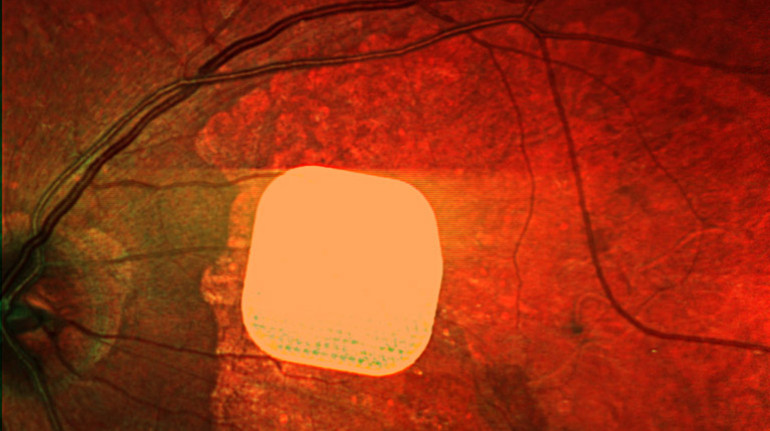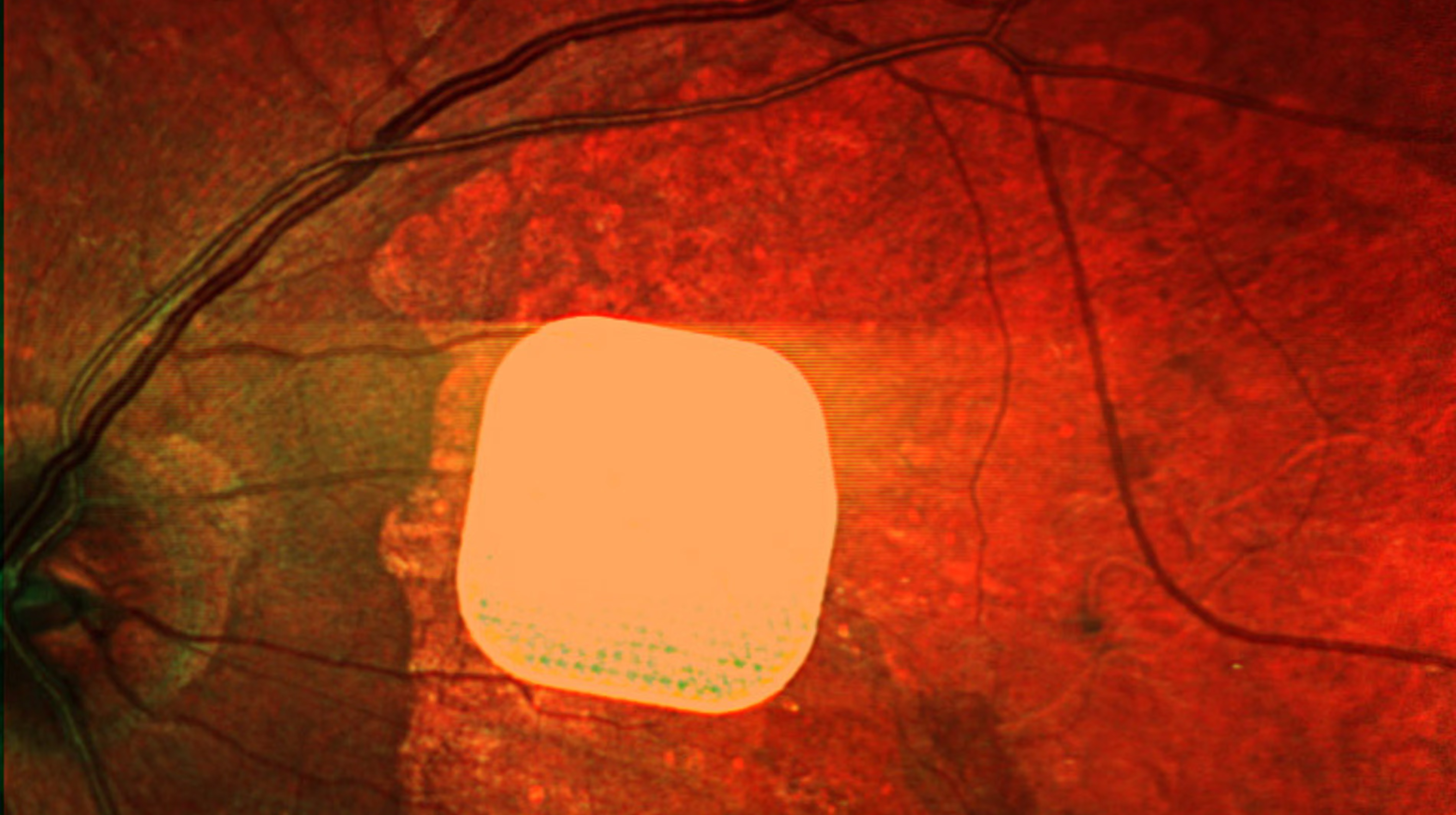“
 A new electronic eye implant the size of a SIM card
A new electronic eye implant the size of a SIM card
Photo: Science Corporation/PA
84% of trial participants implanted with the Prima device regained their ability to read.
The research was conducted in 17 clinics in Europe, in particular in London’s Moorfields Ophthalmological Hospital. His results published in the New England Journal of Medicine, writes The Guardian.
Prima implant is a 2×2 millimeter microchip that is surgically placed under the retina. During an operation lasting less than two hours, the patient is fitted with a device that then works together with augmented reality glasses.
The glasses are equipped with a video camera and a minicomputer on the belt. The camera reads the image, converts it into an infrared signal and transmits it to the microchip, which activates the retinal cells. The information then travels through the optic nerve to the brain, forming an image.
38 elderly patients took part in the trial. All of them suffered from the “dry” form of age-related macular dystrophy – the main cause of vision loss among people over the age of 50, which is not amenable to treatment.
Before the operation, all of them had completely lost their central vision and only had limited peripheral vision. The implantation lasted less than two hours. Five patients were operated on in Moorfields, the rest – in clinics in Germany, France, Italy and the Netherlands.
After the intervention, patients underwent special training and intensive rehabilitation in order to take full advantage of the technology.
“It doesn’t work like you put a chip in your eye and see right away. You need to learn to use this kind of vision.” – explains Mahi Mukit, senior consultant at Moorfields Eye Hospital in London.
Eventually 84% of participants research after installing the device again were able to read letters, numbers and words.
Doctors called the results “impressive” and said the new device could give people a chance to see again.
“In the history of artificial vision, this marks a new era. Blind patients can now achieve real restoration of central vision, which has never been achieved before. The return of the ability to read significantly improves their quality of life, lifts their spirits, restores confidence and independence.” – says Mahi Mukit.
Earlier scientists have created an ultrasound “helmet” for the treatment of neurological diseases without surgical interventions.

”, — write: www.pravda.com.ua
 A new electronic eye implant the size of a SIM card
A new electronic eye implant the size of a SIM card
Photo: Science Corporation/PA
84% of trial participants implanted with the Prima device regained their ability to read.
The research was conducted in 17 clinics in Europe, in particular in London’s Moorfields Ophthalmological Hospital. His results published in the New England Journal of Medicine, writes The Guardian.
Prima implant is a 2×2 millimeter microchip that is surgically placed under the retina. During an operation lasting less than two hours, the patient is fitted with a device that then works together with augmented reality glasses.
The glasses are equipped with a video camera and a minicomputer on the belt. The camera reads the image, converts it into an infrared signal and transmits it to the microchip, which activates the retinal cells. The information then travels through the optic nerve to the brain, forming an image.
38 elderly patients took part in the trial. All of them suffered from the “dry” form of age-related macular dystrophy – the main cause of vision loss among people over the age of 50, which is not amenable to treatment.
Before the operation, all of them had completely lost their central vision and only had limited peripheral vision. The implantation lasted less than two hours. Five patients were operated on in Moorfields, the rest – in clinics in Germany, France, Italy and the Netherlands.
After the intervention, patients underwent special training and intensive rehabilitation in order to take full advantage of the technology.
“It doesn’t work like you put a chip in your eye and see right away. You need to learn to use this kind of vision.” – explains Mahi Mukit, senior consultant at Moorfields Eye Hospital in London.
Eventually 84% of participants research after installing the device again were able to read letters, numbers and words.
Doctors called the results “impressive” and said the new device could give people a chance to see again.
“In the history of artificial vision, this marks a new era. Blind patients can now achieve real restoration of central vision, which has never been achieved before. The return of the ability to read significantly improves their quality of life, lifts their spirits, restores confidence and independence.” – says Mahi Mukit.
Earlier scientists have created an ultrasound “helmet” for the treatment of neurological diseases without surgical interventions.

